Document Outline
- S-8201 Series
- Cover
- Features
- Applications
- Packages
- Block Diagram
- Product Name Structure
- Pin Configurations
- Absolute Maximum Ratings
- Electrical Characteristics
- Test Circuits
- Operation
- Timing Chart
- Example for Battery Protection IC Connection
- Precautions
- Typical Characteristics (Typical Data)
- Package drawings

Rev.2.0
_00
BATTERY PROTECTION IC FOR SINGLE-CELL PACK
S-8201 Series
Seiko Instruments Inc.
1
The S-8201 Series are lithium-ion/lithium polymer
rechargeable battery protection ICs incorporating high-
accuracy voltage detection circuit and delay circuit.
The S-8201 Series are suitable for protection of single-
cell lithium ion/lithium polymer battery packs from
overcharge, overdischarge and overcurrent.
Features
(1) Internal high accuracy voltage detection circuit
∑ Overcharge detection voltage
3.9 V to 4.4 V (5 mV step),
Accuracy
±25 mV (+25 ∞C), ±30 mV (-5 ∞C to +55 ∞C)
∑ Overcharge release voltage
3.8 V to 4.4 V
*1
,
Accuracy
±50mV
∑ Overdischarge detection voltage 2.0 V to 3.0 V (10 mV step), Accuracy ±50 mV
∑ Overdischarge release voltage
2.0 V to 3.4 V
*2
,
Accuracy
±100 mV
∑ Overcurrent 1 detection voltage 0.05 V to 0.3 V (10 mV step) Accuracy ±15 mV
∑ Overcurrent 2 detection voltage 0.5 V (fixed)
Accuracy
±100 mV
(2) High voltage device is used for charger connection pins.
(VM pin and CO pin: Absolute maximum rating
=28 V)
(3) Delay times (Overcharge: t
CU
, Overdischarge: t
DL
, Overcurrent 1: t
lOV1
, Overcurrent 2: t
lOV2
) are generated
by an internal circuit. (No external capacitor is necessary.)
Accuracy
±20%
(4) The overcharge timer reset delay time (7 ms to 40 ms) is generated by an internal circuit only. (No
external capacitor is necessary.)
(5) Three-step overcurrent detection circuit is included. (Overcurrent 1, Overcurrent 2, Load short-circuiting)
(6) Either charge function or charge inhibition function for 0 V battery can be selected.
(7) Charger detection function and abnormal charge current detection function
∑ The overdischarge hysteresis is released by detecting negative voltage at the VM pin (-0.7 V typ.).
(Charger detection function)
∑ When the output voltage of the DO pin is high and the voltage at the VM pin is equal to or lower than
the charger detection voltage (
-0.7 V typ.), the output voltage of the CO pin goes low. (Abnormal
charge current detection function)
(8) Low current consumption
∑ Operation
3.5
µA typ., 7.0 µA max.
∑ Power-down
0.1
µA max.
(9) Wide operating temperature range
-40 ∞C to +85∞C
(10) Small package
6-Pin SOT-23-6, 6-Pin SNB(B)
*1. The overcharge hysteresis voltage is 0.0 V or can be selected from the range 0.1 V to 0.4 V in 50 mV
step.
Overcharge hysterests voltage (V
HC
)
=Overcharge detection voltage-Overcharge release voltage
*2. The overdischarge hysteresis voltage is 0.0 V or can be selected from the range 0.1 V to 0.7 V in
100 mV step.
Overdischarge hysteresis voltage (V
HD
)
=Overdischarge release voltage-Overdischarge detection
voltage
Applications
∑ Lithium-ion rechargeable battery packs
∑ Lithium polymer rechargeable battery packs

BATTERY PROTECTION IC FOR SINGLE PACK
S-8201 Series
Rev.2.0
_00
2
Seiko Instruments Inc.
Packages
Package name
Drawing code
Package
Tape Reel
SOT-23-6 MP006-A
MP006-A
MP006-A
6-Pin SNB(B)
BD006-A
BD006-A
BD006-A
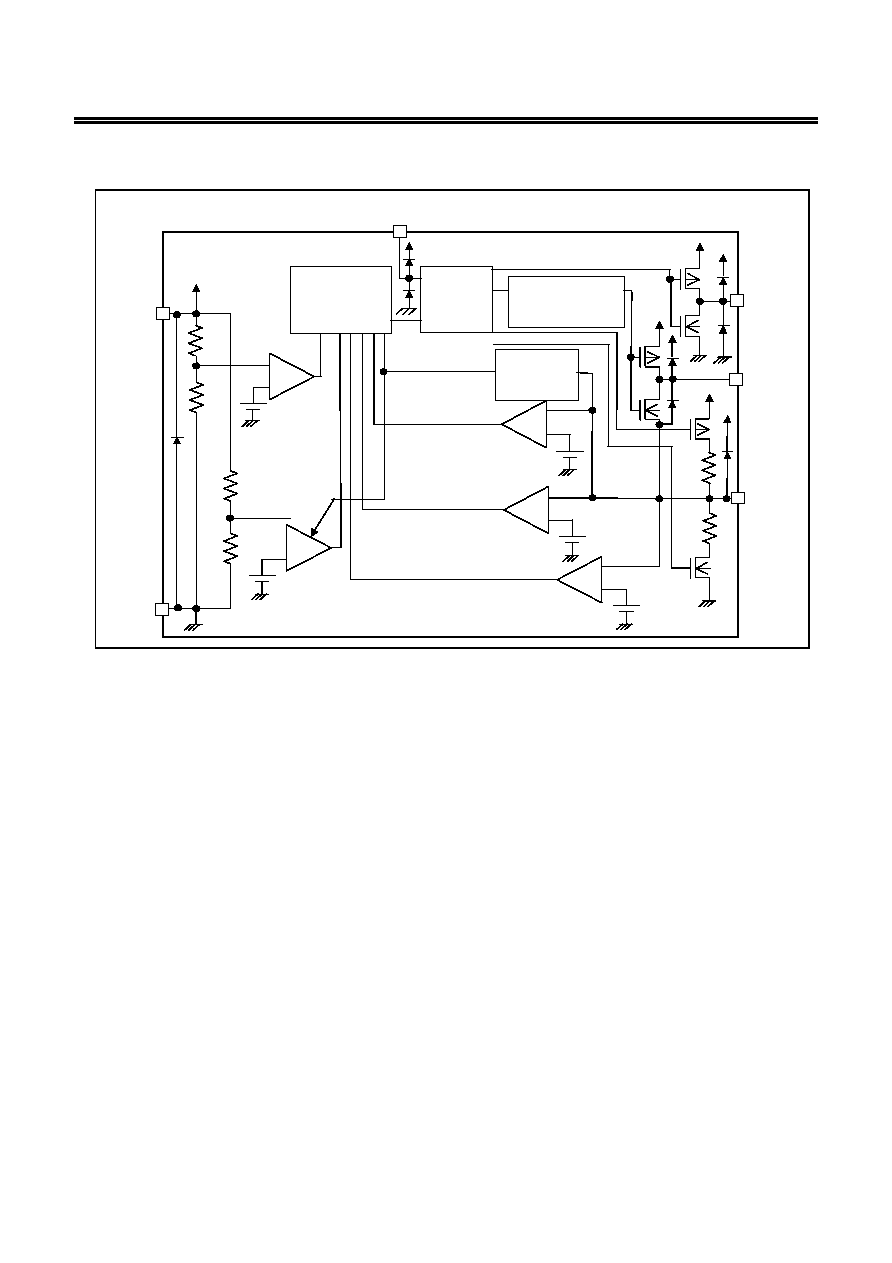
BATTERY PROTECTION IC FOR SINGLE-CELL PACK
Rev.2.0_00
S-8201 Series
Seiko Instruments Inc.
3
Block Diagram
VDD
VSS
DO
CO
VM
+
-
+
-
+
-
+
-
+
-
Oscillator
control circuit
0 V battery
charge/charge
inhibition circuit
Divider
control
logic
Overcharge
detection
comparator
Overdischarge
detection
omparator
Load short-circuiting
detection
comparator
Overcurrent 2
detection
comparator
Overcurrent 1
detection
comparator
Charger
detection
circuit
R
VMD
R
VMS
DP
Output control circuit
Remark The diodes in the figure are all parasitic diodes.
Figure 1

BATTERY PROTECTION IC FOR SINGLE PACK
S-8201 Series
Rev.2.0
_00
4
Seiko Instruments Inc.
Product Name Structure
1. Product Name
S - 8201 x xx xx xxx - xx
IC direction in tape specifications
*1
T2: SOT-23-6
TF: 6-Pin SNB(B)
Product code
*2
Package code
MD: SOT-23-6
BD: 6-Pin SNB(B)
Serial code
Product type
A: A type
B: B type
*1. Refer to the taping specifications at the end of this book.
*2. Refer to the "Table 1 to 2" in the "2. Product Name List".
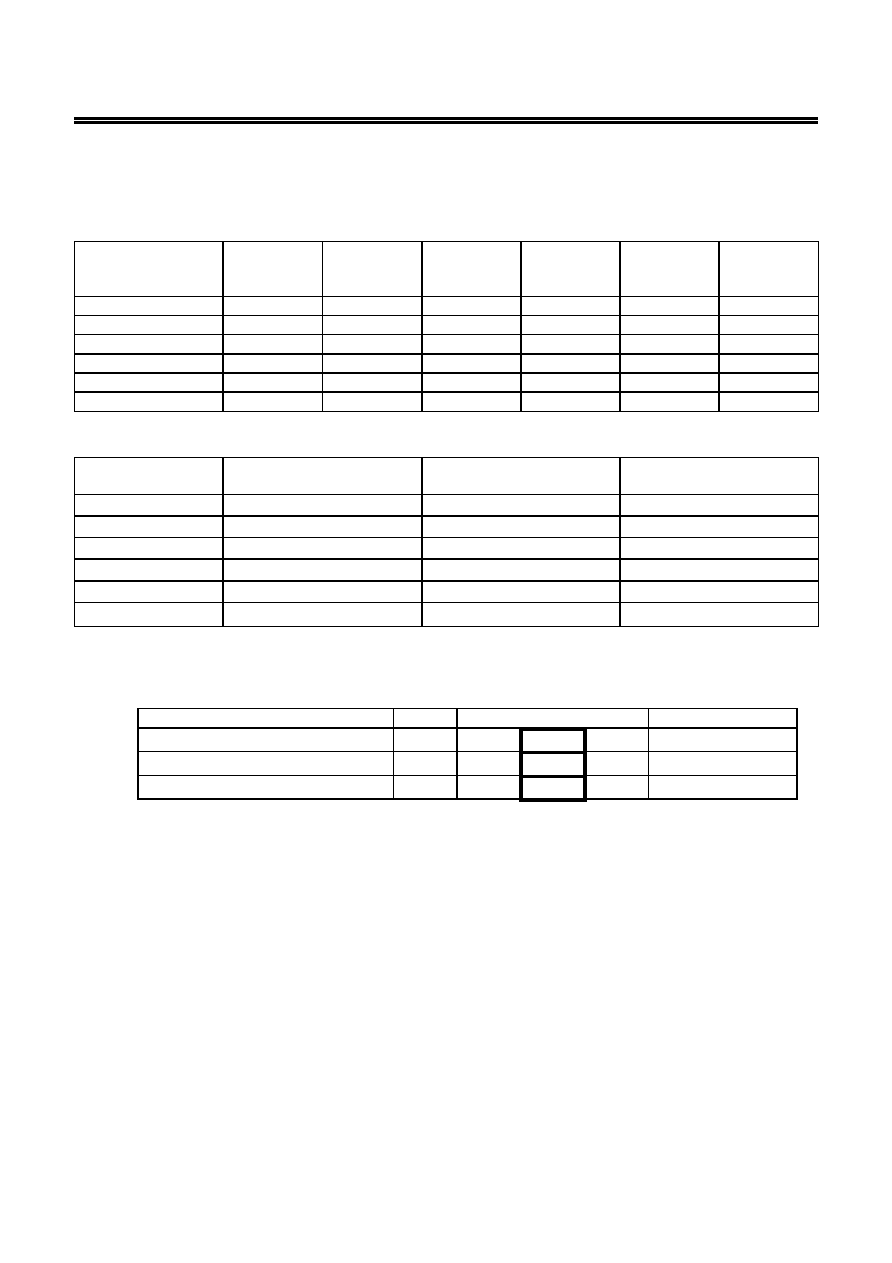
BATTERY PROTECTION IC FOR SINGLE-CELL PACK
Rev.2.0_00
S-8201 Series
Seiko Instruments Inc.
5
2. Product Name List
2-1. A type
Table 1 (1/2)
Model No./Item
Overdischarge
detection
voltage
Overcharge
release
voltage
Overdischarge
detection
voltage
Overdischarge
release
voltage
Overcurrent 1
detection
voltage
0 V battery
charge
function
S-8201AAABD-M5A-TF
4.3 V
4.1 V
2.3 V
2.3 V
0.13 V
Available
S-8201AABBD-M5B-TF
4.305 V
4.005 V
2.3 V
2.9 V
0.1 V
Available
S-8201AACBD-M5C-TF
4.295 V
3.995 V
2.3 V
2.9 V
0.1 V
Available
S-8201AADBD-M5D-TF
4.325 V
4.075 V
2.5 V
2.9 V
0.15 V
Unavailable
S-8201AAEBD-M5E-TF
4.350 V
4.150 V
2.3 V
3.0 V
0.20 V
Unavailable
S-8201AAFBD-M5F-TF
4.350 V
4.150 V
2.3 V
3.0 V
0.20 V
Available
Table 1 (2/2)
Model No./Item
Overcharge detection
delay time
Overdischarge detection
delay time
Overcurrent 1 detection
delay time
S-8201AAABD-M5A-TF
4.6 s
150 ms
9 ms
S-8201AABBD-M5B-TF
4.6 s
150 ms
9 ms
S-8201AACBD-M5C-TF
4.6 s
150 ms
9 ms
S-8201AADBD-M5D-TF
1.2 s
150 ms
9 ms
S-8201AAEBD-M5E-TF
1.2 s
150 ms
9 ms
S-8201AAFBD-M5F-TF
1.2 s
150 ms
9 ms
Remark It is possible to change the detection voltages of the product other than above. The delay times can
also be changed within the range-listed bellow. For details, contact SII marketing department.
Table 2
Delay time
Symbol
Selection range
Remarks
Overcharge detection delay time
t
CU
0.15 s
1.2 s
4.6 s Choose from the left
Overdischarge detection delay time
t
DL
37.5 ms 150 ms 300 ms Choose from the left
Overcurrent 1 detection delay time
t
IOV1
4.5 ms
9m s
18 ms Choose from the left
Remark Values surrounded by bold lines are used in standard products.

BATTERY PROTECTION IC FOR SINGLE PACK
S-8201 Series
Rev.2.0
_00
6
Seiko Instruments Inc.
2-2. B type
Table 3 (1/2)
Model No./Item
Overdischarge
detection
voltage
Overcharge
release
voltage
Overdischarge
detection
voltage
Overdischarge
release
voltage
Overcurrent 1
detection
voltage
0 V battery
charge
function
S-8201BAABD-M7A-TF
4.3 V
4.1 V
2.3 V
2.3 V
0.13 V
Available
Table 3 (2/2)
Model No./Item
Overcharge detection
delay time
Overdischarge detection
delay time
Overdischarge release
delay time
Overcurrent 1 detection
delay time
S-8201BAABD-M7A-TF
4.6 s
150 ms
1.18 ms
9 ms
Remark It is possible to change the detection voltages of the product other than above. The delay times can
also be changed within the range-listed bellow. For details, contact SII marketing department.
Table 4
Delay time
Symbol
Selection range
Remarks
Overcharge detection delay time
t
CU
0.15 s
1.2 s
4.6 s Choose from the left
Overdischarge detection delay time
t
DL
37.5 ms 150 ms 300 ms Choose from the left
Overcurrent 1 detection delay time
t
IOV1
4.5 ms
9m s
18 ms Choose from the left
Remark Values surrounded by bold lines are used in standard products.
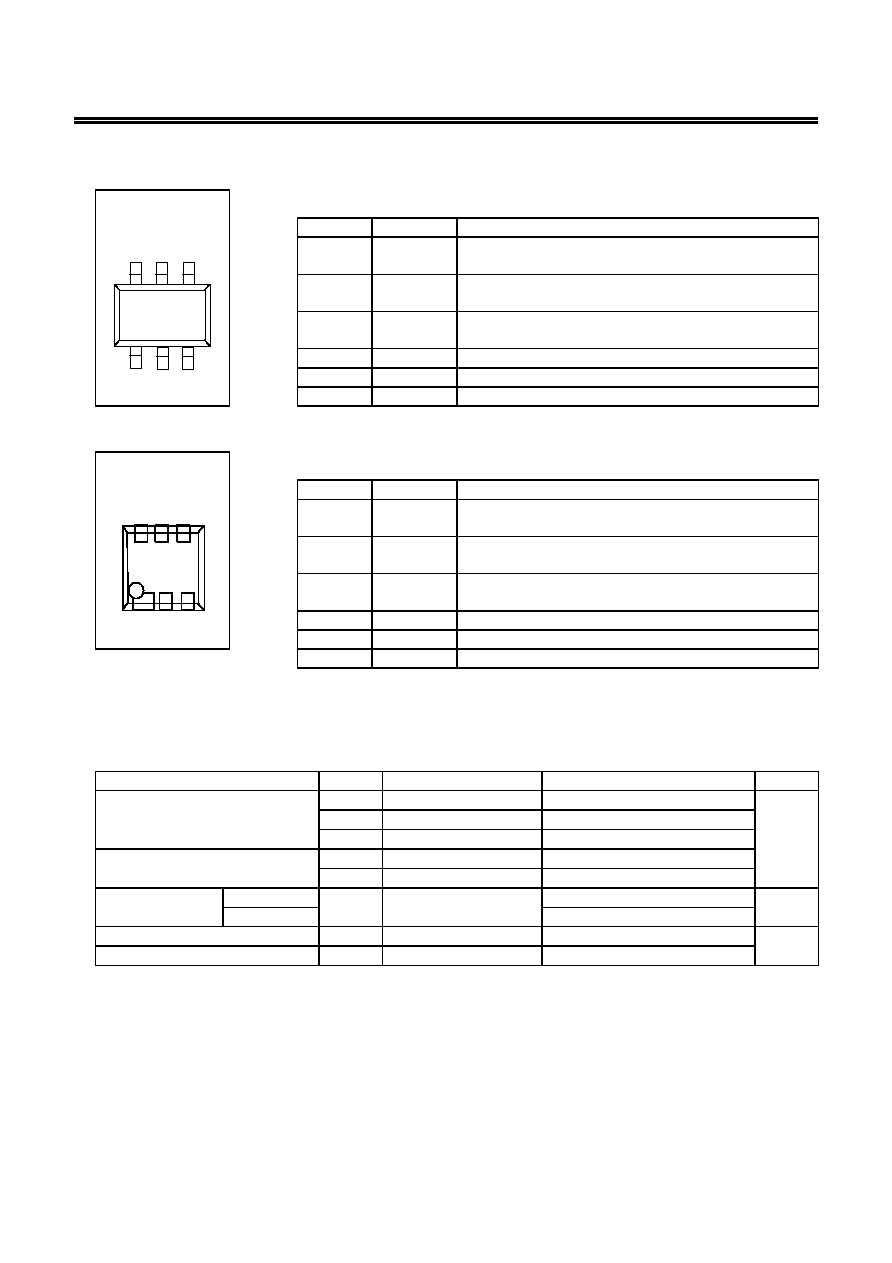
BATTERY PROTECTION IC FOR SINGLE-CELL PACK
Rev.2.0_00
S-8201 Series
Seiko Instruments Inc.
7
Pin Configurations
Table 5
Pin No.
Pin name
Pin description
1
DO
FET gate control pin for discharge
(CMOS output)
2
VM
Voltage detection pin between VM pin and VSS pin
(Overcurrent detection pin)
3
CO
FET gate control pin for charge
(CMOS output)
4
DP
Test pin for delay time acceleration
5
VDD
Positive power input pin
SOT-23-6
Top view
6
4
5
1 2 3
6
VSS
Negative power input pin
Figure 2
Table 6
Pin No.
Pin name
Pin description
1
CO
FET gate control pin for charge
(CMOS output)
2
VM
Voltage detection pin between VM pin and VSS pin
(Overcurrent detection pin)
3
DO
FET gate control pin for discharge
(CMOS output)
4
VSS
Negative power input pin
6-Pin SNB(B)
Top view
6
4
5
3
1
2
5
DP
Test pin for delay time acceleration
6
VDD
Positive power input pin
Figure 3
Absolute Maximum Ratings
Table 7
(Ta
=25 ∞C unless otherwise specified)
Item
Symbol
Applied pin
Absolute maximum ratings
Unit
Input voltage
V
DS
Between VDD and VSS
V
SS
-0.3 to V
SS
+12
*1
V
V
DP
DP
V
SS
-0.3 to V
DD
+0.3
V
VM
VM
V
DD
-28 to V
DD
+0.3
Output voltage
V
CO
CO
V
VM
-0.3 to V
DD
+0.3
V
DO
DO
V
SS
-0.3 to V
DD
+0.3
Power dissipation
SOT-23-6
P
D
250 mW
6-Pin
SNB(B)
90
Operating ambient temperature
Topr
-40 to +85
∞C
Storage temperature
Tstg
-55 to +125
*1. Do not apply pulse-like noise of
µs order exceeding the above input voltage (V
SS
+12 V). The noise
causes damage to the IC.
Caution The absolute maximum ratings are rated values exceeding which the product could suffer
physical damage. These values must therefore not be exceeded under any conditions.

BATTERY PROTECTION IC FOR SINGLE PACK
S-8201 Series
Rev.2.0
_00
8
Seiko Instruments Inc.
Electrical Characteristics
1. Except Detection Delay Time (Ta
=
=
=
=25∞C)
Table 8
(Ta
=25 ∞C unless otherwise specified)
Item Symbol
Condition
Remark
Min.
Typ.
Max.
Unit
Test
circuit
[Detection Voltage, Release Voltage]
V
CU
1
--
V
CU
-0.025
V
CU
V
CU
+0.025
V 1
Overcharge detection voltage,
V
CU
=3.9 to 4.4 V, 5 mV Step
Ta
= -5 ∞C to 55 ∞C
*1
V
CU
-0.03
V
CU
V
CU
+0.03
Overcharge release voltage,
V
CL
=3.8 to 4.4 V
V
CL
1
--
V
CL
-0.05
V
CL
V
CL
+0.05
Overdischarge detection voltage,
V
DL
=2.0 to 3.0 V, 10 mV Step
V
DL
2
--
V
DL
-0.05
V
DL
V
DL
+0.05
2
Overdischarge release voltage,
V
DU
=2.0 to 3.4 V,
V
DU
2
--
V
DU
-0.1
V
DU
V
DU
+0.1
Overcurrent detection voltage 1,
V
IOV1
=0.05 to 0.3 V, 10 mV Step
V
IOV1
3
--
V
IOV1
-0.015 V
IOV1
V
IOV1
+0.015
Overcurrent detection voltage 2
V
IOV2
3
--
0.4 0.5 0.6
Load short-circuiting detection
voltage
V
SHORT
3
--
0.9 1.2 1.5
Charger detection voltage
V
CHA
4
--
-1.0
-0.7
-0.4
[Operation Voltage]
Operation voltage between VDD
pin and VSS pin
V
DSOP1
--
Internal circuit
operating voltage
1.5 -- 8 V
--
Operation voltage between VDD
pin and VM pin
V
DSOP2
--
Internal circuit
operating voltage
1.5 -- 28
[Current Consumption]
Current consumption in normal
operation
I
OPE
5
V
DD
=3.5 V, V
VM
=0 V
1.0 3.5 7.0
µA
2
Current consumption at power
down
I
PDN
5 V
DD
=V
VM
=1.5 V
-- -- 0.1
[Output Resistance]
CO pin High resistance
R
COH
7
V
CO
=3.0 V,
V
DD
=3.5 V, V
VM
=0 V
2.5 5 10
k
4
CO pin Low resistance
R
COL
7
V
CO
=0.5 V,
V
DD
=4.5 V, V
VM
=0 V
2.5 5 10
DO pin High resistance
R
DOH
8
V
DO
=3.0 V,
V
DD
=3.5 V, V
VM
=0 V
2.5 5 10
DO pin Low resistance
R
DOL
8
V
DO
=0.5 V,
V
DD
=V
VM
=1.8 V
2.5 5 10
[VM Internal Resistance]
Internal resistance between VM
pin and VDD pin
R
VMD
6
V
DD
=1.8 V, V
VM
=0 V
100 300 900
k
3
Internal resistance between VM
pin and VSS pin
R
VMS
6
V
DD
=3.5 V,
V
VM
=1.0 V
10 20 40
[0 V Battery Charging Function]
0 V battery charge starting
charger voltage
V
0CHA
11
0 V battery charging
available
1.2 -- -- V
2
0 V battery charge inhibition
battery voltage
V
0INH
12
0 V battery charging
unavailable
-- -- 0.5
*1 Since products are not screened at low and high temperature, the specification for this temperature range is
guaranteed by design, not tested in production.

BATTERY PROTECTION IC FOR SINGLE-CELL PACK
Rev.2.0_00
S-8201 Series
Seiko Instruments Inc.
9
2. Except Detection Delay Time (Ta
=
=
=
= ----40 to 85 ∞∞∞∞C
*1
)
Table 9
(Ta
= -40 to 85 ∞C unless otherwise specified)
Item Symbol
Condition
Remark
Min.
Typ.
Max.
Unit
Test
circuit
[Detection voltage, Release Voltage]
Overcharge detection voltage,
V
CU
=3.9 to 4.4 V, 5 mV Step
V
CU
1
--
V
CU
-0.055
V
CU
V
CU
+0.040 V 1
Overcharge release voltage,
V
CL
=3.8 to 4.4 V
V
CL
1
--
V
CL
-0.08
V
CL
V
CL
+0.065
Overdischarge detection voltage,
V
DL
=2.0 to 3.0 V, 10 mV Step
V
DL
2
--
V
DL
-0.08
V
DL
V
DL
+0.08
2
Overdischarge release voltage,
V
DU
=2.0 to 3.4 V
V
DU
2
--
V
DU
-0.13
V
DU
V
DU
+0.13
Overcurrent 1 detection voltage,
V
IOV1
=0.05 to 0.3 V, 10 mV Step
V
IOV1
3
--
V
IOV1
-0.021 V
IOV1
V
IOV1
+0.021
Overcurrent 2 detection voltage
V
IOV2
3
--
0.37 0.5 0.63
Load short-circuiting detection
voltage
V
SHORT
3
--
0.7 1.2 1.7
Charger detection voltage
V
CHA
4
--
-1.2
-0.7
-0.2
[Operation voltage]
Operation voltage between VDD
pin and VSS pin
V
DSOP1
--
Internal circuit
operating voltage
1.5 -- 8 V
--
Operation voltage between VDD
pin and VM pin
V
DSOP2
--
Internal circuit
operating voltage
1.5 -- 28
[Current consumption]
Current consumption in normal
operation
I
OPE
5
V
DD
=3.5 V, V
VM
=0 V
0.7 3.5 8.0
µA
2
Current consumption at power
down
I
PDN
5 V
DD
=V
VM
=1.5 V
-- -- 0.1
[Output Resistance]
CO pin High resistance
R
COH
7
V
CO
=3.0 V,
V
DD
=3.5 V, V
VM
=0 V
1.2 5 15
k
4
CO pin Low resistance
R
COL
7
V
CO
=0.5 V,
V
DD
=4.5 V, V
VM
=0 V
1.2 5 15
DO pin High resistance
R
DOH
8
V
DO
=3.0 V,
V
DD
=3.5 V, V
VM
=0 V
1.2 5 15
DO pin Low resistance
R
DOL
8
V
DO
=0.5 V,
V
DD
=V
VM
=1.8 V
1.2 5 15
[VM Internal Resistance]
Internal resistance between VM
pin and VDD pin
R
VMD
6
V
DD
=1.8 V, V
VM
=0 V
78 300 1310
k
3
Internal resistance between VM
pin and VSS pin
R
VMS
6
V
DD
=3.5V, V
VM
=1.0 V
7.2 20 44
[0 V Battery Charging Function]
0 V battery charge starting
charger voltage
V
0CHA
11
0 V battery charging
available
1.7 -- -- V
2
0 V battery charge inhibition
battery voltage
V
0INH
12
0 V battery charging
unavailable
-- -- 0.3
*1. Since products are not screened at low and high temperature, the specification for this temperature range is
guaranteed by design, not tested in production.
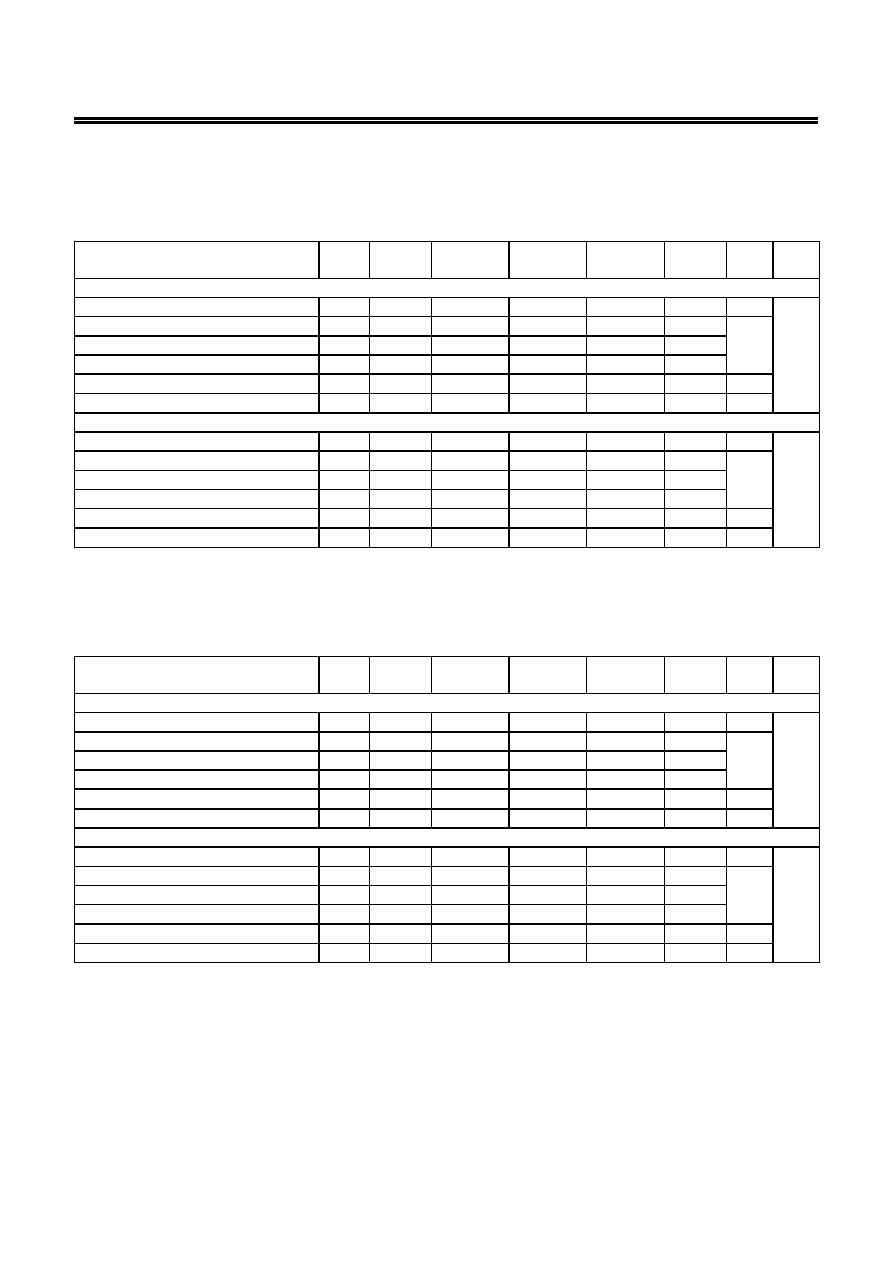
BATTERY PROTECTION IC FOR SINGLE PACK
S-8201 Series
Rev.2.0
_00
10
Seiko Instruments Inc.
3. Detection Delay Time
3-1. S-8201AAA, S-8201AAB, S-8201AAC
Table 10
Item Symbol
Condition
Remark
Min.
Typ.
Max.
Unit
Test
circuit
[Delay Time] 25 ∞C
Overcharge detection delay time
t
CU
9 --
3.7 4.6 5.5 s 5
Overdischarge detection delay time
t
DL
9 -- 120 150 180
ms
Overcurrent 1 detection delay time
t
IOV1
10
--
7.2
9
11
Overcurrent 2 detection delay time
t
IOV2
10
--
3.6
4.5 5.4
Load short-circuiting detection delay time t
SHORT
10
--
450
600 720
µs
Overcharge timer reset delay time
ttr 13 --
10
18 28 ms
[Delay Time]
-
-
-
-40 to 85 ∞C
*1
Overcharge detection delay time
t
CU
9 --
2.5 4.6 7.8 s 5
Overdischarge detection delay time
t
DL
9 --
83 150 255
ms
Overcurrent 1 detection delay time
t
IOV1
10
--
5
9
15
Overcurrent 2 detection delay time
t
IOV2
10
--
2.5
4.5 7.7
Load short-circuiting detection delay time t
SHORT
10
--
310
600 1020
µs
Overcharge timer reset delay time
ttr 13 --
7
18 40 ms
*1. Since products are not screened at low and high temperature, the specification for this temperature range is
guaranteed by design.
3-2. S-8201AAD, S-8201AAE, S-8201AAF
Table 11
Item Symbol
Condition
Remark
Min.
Typ.
Max.
Unit
Test
circuit
[Delay Time] 25 ∞C
Overcharge detection delay time
t
CU
9 -- 0.96 1.2 1.4 s 5
Overdischarge detection delay time
t
DL
9 -- 120 150 180
ms
Overcurrent 1 detection delay time
t
IOV1
10
--
7.2
9
11
Overcurrent 2 detection delay time
t
IOV2
10
--
1.8
2.24 2.7
Load short-circuiting detection delay time t
SHORT
10
--
220
320 380
µs
Overcharge timer reset delay time
ttr 13 --
10
18 28 ms
[Delay Time]
-
-
-
-40 to 85 ∞C
*1
Overcharge detection delay time
t
CU
9 --
0.7 1.2 2.0 s 5
Overdischarge detection delay time
t
DL
9 --
83 150 255
ms
Overcurrent 1 detection delay time
t
IOV1
10
--
5
9
15
Overcurrent 2 detection delay time
t
IOV2
10
--
1.2
2.24 3.8
Load short-circuiting detection delay time t
SHORT
10
--
150
320 540
µs
Overcharge timer reset delay time
ttr 13 --
7
18 40 ms
*1. Since products are not screened at low and high temperature, the specification for this temperature range is
guaranteed by design.

BATTERY PROTECTION IC FOR SINGLE-CELL PACK
Rev.2.0_00
S-8201 Series
Seiko Instruments Inc.
11
3-3. S-8201BAA
Table 12
Item Symbol
Condition
Remark
Min.
Typ.
Max.
Unit
Test
circuit
[Delay Time] 25 ∞C
Overcharge detection delay time
t
CU
9 --
3.7 4.6 5.5 s 5
Overdischarge detection delay time
t
DL
9 -- 120 150 180
ms
Overdischarge release delay time
t
DU
9
0.94 1.18
1.42
Overcurrent 1 detection delay time
t
IOV1
10
--
7.2
9
11
Overcurrent 2 detection delay time
t
IOV2
10
--
3.6
4.5 5.4
Load short-circuiting detection delay time t
SHORT
10
--
450
600 720
µs
Overcharge timer reset delay time
ttr 13 --
10
18 28 ms
[Delay Time]
-
-
-
-40 to 85 ∞C
*1
Overcharge detection delay time
t
CU
9 --
2.5 4.6 7.8 s 5
Overdischarge detection delay time
t
DL
9 --
83 150 255
ms
Overdischarge release delay time
t
DU
9
0.65 1.18 2.01
Overcurrent 1 detection delay time
t
IOV1
10
--
5
9
15
Overcurrent 2 detection delay time
t
IOV2
10
--
2.5
4.5 7.7
Load short-circuiting detection delay time t
SHORT
10
--
310
600 1020
µs
Overcharge timer reset delay time
ttr 13 --
7
18 40 ms
*1. Since products are not screened at low and high temperature, the specification for this temperature range is
guaranteed by design.

BATTERY PROTECTION IC FOR SINGLE PACK
S-8201 Series
Rev.2.0
_00
12
Seiko Instruments Inc.
Test Circuits
Caution Unless otherwise specified, the output voltage (V
CO
) levels at CO pin and DO pin and "H"
and "L" at the V
DO
are judged by the threshold voltage (1.0 V) of the N channel FET. Judge
the CO pin level with respect to V
VM
and the DO pin level with respect to V
SS
.
(1) Test Condition 1 (Test Circuit 1): Overcharge Detection Voltage, Overcharge Release Voltage
The overcharge detection voltage (V
CU
) is defined as the voltage between VDD pin and VSS pin at which
V
CO
goes from "H" to "L" when the voltage V1 is gradually increased from the starting condition of
V1
=3.5 V. The overcharge release voltage (V
CL
) is defined as the voltage between VDD pin and VSS pin
at which V
CO
goes from "L" to "H" when the voltage V1 is then gradually decreased.
The overcharge hysteresis voltage (V
HC
) is defined as the difference between the overcharge detection
voltage (V
CU
) and the overcharge release voltage (V
CL
).
(2) Test Condition 2 (Test Circuit 2): Overdischarge Detection Voltage, Overdischarge Release
Voltage
The overdischarge detection voltage (V
DL
) is defined as the voltage between VDD pin and VSS pin at
which V
DO
goes from "H" to "L" when the voltage V1 is gradually decreased from the starting condition of
V1
=3.5 V, V2=0 V. The overdischarge release voltage (V
DU
) is defined as the voltage between VDD pin
and VSS pin at which V
DO
goes from "L" to "H" when the voltage V1 is then gradually increased.
The overdischarge hysteresis voltage (V
HD
) is defined as the difference between the overcharge release
voltage (V
DU
) and the overdischarge detection voltage (V
DL
).
(3) Test Condition 3 (Test Circuit 2): Overcurrent 1 Detection Voltage, Overcurrent 2 Detection
Voltage, Load Short-circuiting Detection Voltage
The overcurrent 1 detection voltage is defined by the voltage between VM pin and VSS pin whose delay
time for changing V
DO
from "H" to "L" lies between the minimum and the maximum value of the
overcurrent 1 detection delay time when the voltage V2 is increased rapidly within 10
µs from the starting
condition V1
=3.5 V and V2=0 V.
The overcurrent 2 detection voltage is defined by the voltage between VM pin and VSS pin whose delay
time for changing V
DO
from "H" to "L" lies between the minimum and the maximum value of the
overcurrent 2 detection delay time when the voltage V2 is increased rapidly within 10
µs from the starting
condition V1
=3.5 V and V2=0 V.
The load short-circuiting detection voltage is defined by the voltage between VM pin and VSS pin whose
delay time for changing V
DO
from "H" to "L" lies between the minimum and the maximum value of the load
short-circuiting detection delay time when the voltage V2 is increased rapidly within 10
µs from the starting
condition V1
=3.5 V and V2=0 V.
(4) Test Condition 4 (Test Circuit 2): Charger Detection Voltage (
=
=
=
=Abnormal Charge Current
Detection Voltage)
Set V1
=1.8 V and V2=0 V. Increase V1 gradually until V1=V
DL
+(V
HD
/2), then decrease V2 from 0 V
gradually. The voltage between VM pin and VSS pin when V
DO
goes from "L" to "H" is the charger
detection voltage (V
CHA
). Charger detection voltage can be measured only in the product whose
overdischarge hysteresis V
HD
0.
Set V1
=3.5 V and V2=0 V. Decrease V2 from 0 V gradually. The voltage between VM pin and VSS pin
when V
CO
goes from "H" to "L" is the abnormal charge current detection voltage. The abnormal charge
current detection voltage has the same value as the charger detection voltage (V
CHA
).

BATTERY PROTECTION IC FOR SINGLE-CELL PACK
Rev.2.0_00
S-8201 Series
Seiko Instruments Inc.
13
(5) Test Condition 5 (Test Circuit 2): Normal Operation Current Consumption, Power-down Current
Consumption
Set V1
=3.5 V and V2=0 V under normal condition. The current I
DD
flowing through VDD pin is the normal
operation consumption current (I
OPE
).
Set V1
=V2=1.5 V under overdischarge condition. The current I
DD
flowing through VDD pin is the power-
down current consumption (I
PDN
).
(6) Test Condition 6 (Test Circuit 3): Internal Resistance between VM Pin and VDD Pin, Internal
Resistance between VM Pin and VSS Pin
Set V1
=1.8 V and V2=0 V. The resistance between VM pin and VDD pin is the internal resistance (R
VMD
)
between VM pin and VDD pin.
Set V1
=3.5 V and V2=1.0 V. The resistance between VM pin and VSS pin is the internal resistance
(R
VMS
) between VM pin and VSS pin.
(7) Test Condition 7 (Test Circuit 4): CO Pin H Resistance, CO Pin L Resistance
Set V1
=3.5 V, V2=0 V and V3=3.0 V. CO pin resistance is the CO pin H resistance (R
COH
).
Set V1
=4.5 V, V2=0 V and V3=0.5 V. CO pin resistance is the CO pin L resistance (R
COL
).
(8) Test Condition 8 (Test Circuit 4): DO Pin H Resistance, DO Pin L Resistance
Set V1
=3.5 V, V2=0 V and V4=3.0 V. DO pin resistance is the DO pin H resistance (R
DOH
).
Set V1
=1.8 V, V2=0 V and V4=0.5 V. DO pin resistance is the DO pin L resistance (R
DOL
).
(9) Test Condition 9 (Test Circuit 5): Overcharge Detection Delay Time, Overdischarge Detection
Delay Time, Overdischarge Release Delay Time
The overcharge detection delay time (t
CU
) is the time needed for V
CO
to change from "H" to "L" just after
the V1 rapid increase within 10
µs from the overcharge detection voltage (V
CU
)
-0.2 V to the overcharge
detection voltage (V
CU
)
+0.2 V in the condition V2=0 V.
The overdischarge detection delay time (t
DL
) is the time needed for V
DO
to change from "H" to "L" just after
the V1 rapid decrease within 10
µs from the overdischarge detection voltage (V
DL
)
+0.2 V to the
overdischarge detection voltage (V
DL
)
-0.2 V in the condition V2=0 V.
The overdischarge release delay time (t
DU
) is the time needed for V
DO
to change from "L" to "H" just after
the V1 rapid increase within 10
µs from the overdischarge release voltage (V
DU
)
-0.2 V to the
overdischarge release voltage (V
DU
)
+0.2 V in the condition V2=0 V.

BATTERY PROTECTION IC FOR SINGLE PACK
S-8201 Series
Rev.2.0
_00
14
Seiko Instruments Inc.
(10) Test Condition 10 (Test Circuit 5): Overcurrent 1 Detection Delay Time, Overcurrent 2 Detection
Delay Time, Load Short-circuiting Detection Delay Time, Abnormal Charge Current Detection
Delay Time
Set V1
=3.5 V and V2=0 V. Increase V2 from 0 V to 0.35 V momentarily (within 10 µ
S
). The time needed
for V
DO
to go "L" is overcurrent detection delay time 1 (t
IOV1
).
Set V1
=3.5 V and V2=0 V. Increase V2 from 0 V to 0.7 V momentarily (within 10 µ
S
). The time needed
for V
DO
to go "L" is overcurrent detection delay time 2 (t
IOV2
).
Set V1
=3.5 V and V2=0 V. Increase V2 from 0 V to 1.6 V momentarily (within 10 µ
S
). The time needed
for V
DO
to go "L" is the load short-circuiting detection delay time (t
SHORT
).
Set V1
=3.5 V and V2=0 V. Decrease V2 from 0 V to -1.1 V momentarily (within 10 µ
S
). The time needed
for V
CO
to go "L" is the abnormal charge current detection delay time. The abnormal charge current
detection delay time has the same value as the overcharge detection delay time.
(11) Test Condition 11 (Test Circuit 2): 0 V Battery Charge Starting Charger Voltage (Product with 0 V
Battery Charge Function)
Set V1
=V2=0 V and decrease V2 gradually. The voltage between VDD pin and VM pin when V
CO
goes
"H" (V
VM
+0.1 V or higher) is the 0 V battery charge starting charger voltage (V
0CHA
).
(12) Test Condition 12 (Test Circuit 2): 0 V Battery Charge Inhibition Battery Voltage (Product with 0 V
Battery Charge Inhibition Function)
Set V1
=0 V and V2= -4 V and Increase V1 gradually. The voltage between VDD pin and VSS pin when
V
CO
goes "H" (V
VM
+0.1 V or higher) is the 0 V battery charge inhibition battery voltage (V
0INH
).
(13) Test Condition 13 (Test Circuit 5): Overcharge Timer Reset Delay Time
Set V2
=0 V. Increase V1 from overcharge detection voltage (V
CU
) ≠0.2 V to overcharge detection voltage
(V
CU
)
+0.2 V momentarily (within 10 µs), then decrease V1 again to overcharge detection voltage (V
CU
)
≠0.2 V momentarily (within 10
µs) after half the overcharge detection delay time (t
CU
) has elapsed.
Following ttr Min., again increase V1 to overcharge detection voltage (V
CU
)
+0.2 V momentarily (within
10
µs) and check that V
CO
changes from "H" to "L" after the overcharge detection delay time from when
V1 is first increased momentarily (within 10
µs) to overcharge detection voltage (V
CU
)
+0.2 V.
Set V2
= 0V. Increase V1 from overcharge detection voltage (V
CU
) ≠0.2 V to overcharge detection voltage
(V
CU
)
+0.2 V momentarily (within 10 µs), then decrease V1 again to overcharge detection voltage (V
CU
)
≠0.2 V momentarily (within 10
µs) after half the overcharge detection delay time (t
CU
) has elapsed.
Following ttr Max., again increase V1 to overcharge detection voltage (V
CU
)
+0.2 V momentarily (within
10
µs) and check that V
CO
stays "H" after the overcharge detection delay time from when V1 is first
increased momentarily (within 10
µs) to overcharge detection voltage (V
CU
)
+0.2 V.
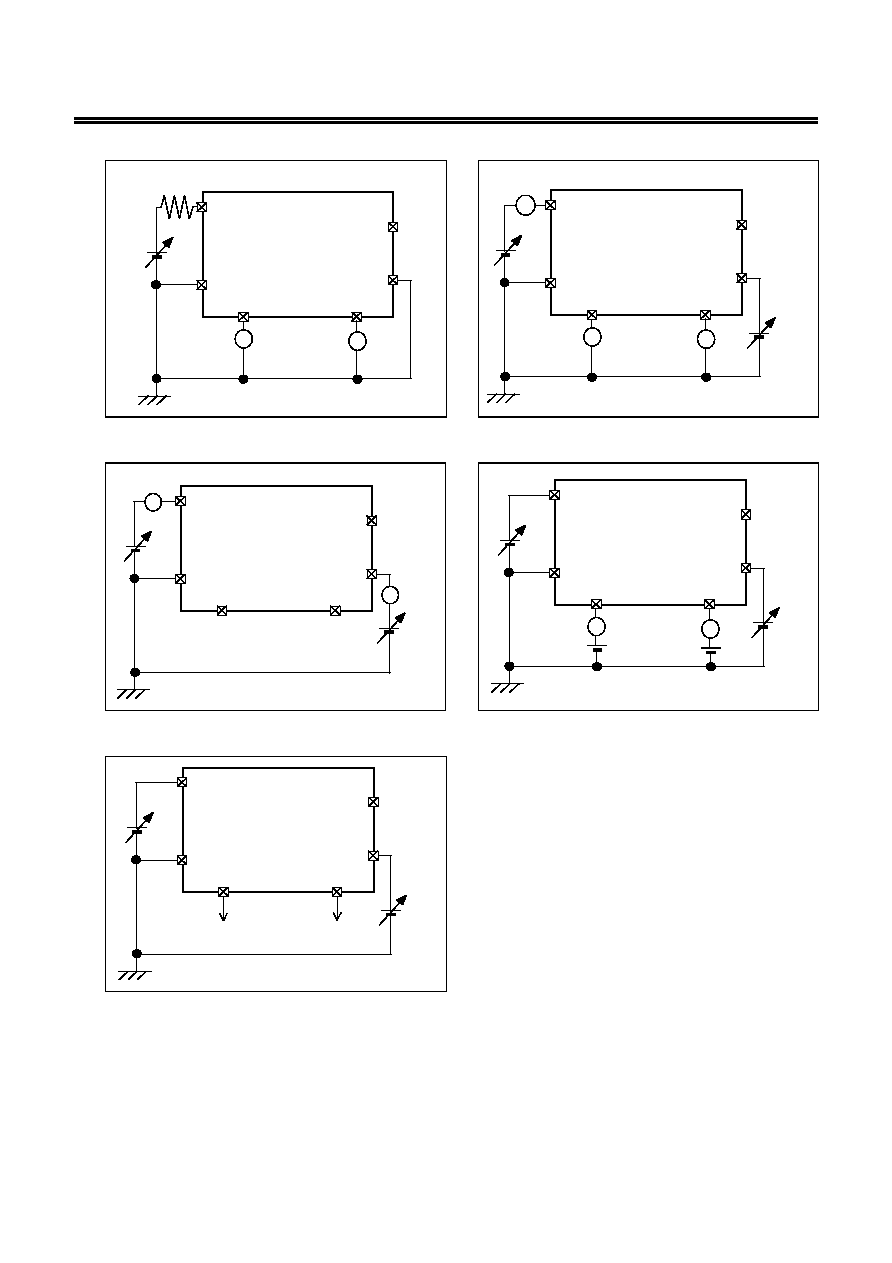
BATTERY PROTECTION IC FOR SINGLE-CELL PACK
Rev.2.0_00
S-8201 Series
Seiko Instruments Inc.
15
S-8201 Series
VDD
VSS
DO CO
VM
DP
V1
COM
V V
DO
V V
CO
R1
=470
S-8201 Series
VDD
VSS
DO CO
VM
DP
V2
V1
COM
V V
DO
V V
CO
I
DD
A
Figure 4 Test Circuit 1
Figure 5 Test Circuit 2
S-8201 Series
VDD
VSS
DO CO
VM
DP
V2
V1
COM
A I
VM
A
I
DO
S-8201 Series
VDD
VSS
DO CO
VM
DP
V2
V1
COM
A I
DO
V4
V3
A I
CO
Figure 6 Test Circuit 3
Figure 7 Test Circuit 4
S-8201 Series
VDD
VSS
DO CO
VM
DP
V2
V1
COM
Ocilloscope
Ocilloscope
Figure 8 Test Circuit 5

BATTERY PROTECTION IC FOR SINGLE PACK
S-8201 Series
Rev.2.0
_00
16
Seiko Instruments Inc.
Operation
Remark Refer to the " Example for Battery Protection IC Connection".
1. Normal Condition
The S-8201 Series monitors the voltage of the battery connected between VDD pin and VSS pin and the
voltage difference between VM pin and VSS pin to control charging and discharging. When the battery
voltage is in the range from the overdischarge detection voltage (V
DL
) to the overcharge detection voltage
(V
CU
), and the VM pin voltage is in the range from the charger detection voltage (V
CHA
) to the overcurrent
1 detection voltage (V
IOV1
), the IC turns both the charging and discharging control FETs on. This
condition is called the normal condition, and in this condition charging and discharging can be carried out
freely.
Caution When a battery is connected to the IC for the first time, the battery may not enter
dischargeable state. In this case, set the VM pin voltage equal to the VSS pin voltage or
connect a charger to enter the normal condition.
2. Overcurrent Condition (Overcurrent 1 Detection, Overcurrent 2 Detection, and Load Short-
circuiting Detection)
When the condition in which VM pin voltage is equal to or higher than the overcurrent detection voltage,
condition that caused by the excess of discharging current over a specified value, continues longer than
the overcharge detection delay time in a battery under the normal condition, the S-8201 Series turns the
discharging control FET off to stop discharging. This condition is called the overcurrent condition.
Though the VM pin and VSS pin are shorted by the resistor in the IC (R
VMS
) under the overcurrent
condition provided that the VM pin voltage is pulled to the V
DD
level by the load as long as the load is
connected.
The VM pin voltage returns to V
SS
level when the load is released. The overcurrent condition returns to
the normal condition when the impedance between the EB
+ and EB- pin (Refer to Figure 14) becomes
higher than the automatic recoverable impedance and the IC detects that the VM pin potential is lower
than the overcurrent 1 detection voltage (V
IOV1
).
Caution The automatic recoverable impedance changes depending on the battery voltage and
overcurrent 1 detection voltage settings.

BATTERY PROTECTION IC FOR SINGLE-CELL PACK
Rev.2.0_00
S-8201 Series
Seiko Instruments Inc.
17
3. Overcharge Condition
When the battery voltage becomes higher than the overcharge detection voltage (V
CU
) during charging
under the normal condition and the detection continues for the overcharge detection delay time (t
CU
) or
longer, the S-8201 Series turns the charging control FET off to stop charging. This condition is called the
overcharge condition.
The overcharge condition is released by the following two cases ((1) and (2)):
(1) When the battery voltage falls below the overcharge release voltage, which is equal to the overcharge
detection voltage (V
CU
)
-overcharge detection hysteresis voltage (V
HC
), the S-8201 Series turns the
charging control FET on and turns to the normal condition.
(2) When a load is connected and discharging starts, the S-8201 Series turns the charging control FET
on and returns to the normal condition. Just after the load is connected and discharging starts, the
discharging current flows through the parasitic diode in the charging control FET. At this moment the
VM pin potential becomes V
f
voltage, the voltage for the parasitic diode, higher than V
SS
level. When
the battery voltage goes under the overcharge detection voltage (V
CU
) and provided that the VM pin
voltage is higher than the overcurrent 1 detection voltage, the S-8201 Series releases the overcharge
condition.
Caution 1. If the battery is charged to a voltage higher than the overcharge detection voltage (V
CU
)
and the battery voltage does not fall below the overcharge detection voltage (V
CU
) even
when a heavy load is connected, the detection of overcurrent 1, overcurrent 2 and load
short-circuiting does not work. Since an actual battery has the internal impedance of
several dozens of m
, the battery voltage drops immediately after a heavy load which
causes overcurrent is connected, and the detection of overcurrent 1, overcurrent 2 and
load short-circuiting then works.
2. When a charger is connected after the overcharge detection, the overcharge condition
is not released even if the battery voltage is below the overcharge release voltage V
CL
(
=
=
=
=V
CU
-
-
-
-V
HC
). The overcharge condition is released when the VM pin voltage goes over
the charger detection voltage (V
CHA
) by removing the charger.
3. If the overcharge release pulse for less than the overcharge timer reset delay time (ttr)
is input during the overcharge detection delay time (t
CU
) that after exceeding the
overcharge detection voltage (V
CU
), the t
CU
keeps the count. However, if the
overcharge release pulse is input for ttr or longer under the same conditions, the t
CU
count is reset.
4. Overdischarge Condition
When the battery voltage falls below the overdischarge detection voltage (V
DL
) during discharging under
the normal condition and the detection continues for the overdischarge detection delay time (t
DL
) or
longer, the S-8201 Series turns the discharging control FET off to stop discharging. This condition is
called the overdischarge condition. When the discharging control FET turns off, the VM pin voltage is
pulled up by the resistor between VM pin and VDD pin in the IC (R
VMD
). The voltage difference between
VM pin and VDD pin then falls bellow 1.3 V (typ.), the current consumption is reduced to the power-down
current consumption (I
PDN
). This condition is called the power-down condition.
The power-down condition is released when a charger is connected and the voltage difference between
VM pin and VDD pin becomes 1.3 V (typ.) or higher. Moreover when the battery voltage becomes the
overdischarge detection voltage (V
DL
) or higher the S-8201 Series turns the discharging FET on and
returns to the normal condition.

BATTERY PROTECTION IC FOR SINGLE PACK
S-8201 Series
Rev.2.0
_00
18
Seiko Instruments Inc.
5. Charger Detection
When a battery in the overdischarge condition is connected to a charger and provided that the VM pin
voltage is lower than the charger detection voltage (V
CHA
), the S-8201 Series releases the overdischarge
condition and turns the discharging control FET on as the battery voltage becomes equal to or higher
than the overdischarge detection voltage (V
DL
) since the charger detection function works. This action is
called charger detection.
When a battery in the overdischarge condition is connected to a charger and provided that the VM pin
voltage is not lower than the charger detection voltage (V
CHA
), the S-8201 Series releases the
overdischarge condition when the battery voltage reaches the overdischarge detection voltage (V
DL
)
+
overdischarge hysteresis (V
HD
) or higher.
6. Abnormal Charge Current Detection
If the VM pin voltage falls below the charger detection voltage (V
CHA
) during charging under normal
condition and it continues for the overcharge detection delay time (t
CU
) or longer, the charging control FET
turns off and charging stops. This action is called the abnormal charge current detection.
Abnormal charge current detection works when the DO pin voltage is "H" and the VM pin voltage falls
below the charger detection voltage (V
CHA
). Consequently, if an abnormal charge current flows to an
over-discharged battery, the S-8201 Series turns the charging control FET off and stops charging after
the battery voltage becomes higher than the overdischarge detection voltage which make the DO pin
voltage "H", and still after the overcharge detection delay time (t
CU
) elapses.
Abnormal charge current detection is released when the voltage difference between VM pin and VSS pin
becomes less than charger detection voltage (V
CHA
).

BATTERY PROTECTION IC FOR SINGLE-CELL PACK
Rev.2.0_00
S-8201 Series
Seiko Instruments Inc.
19
7. Delay Circuits
The detection delay times are generated by dividing the approximate 3.5 kHz clock with a counter.
Caution1. The detection delay time for overcurrent 2 and load and short-circuiting start when the
overcurrent 1 is detected. As soon as the overcurrent 2 or load short-circuiting is
detected over the detection delay time for overcurrent 2 or load short-circuiting after
the detection of overcurrent 1, the S-8201 Series turns the discharging control FET off.
DO pin
VM pin
V
DD
V
DD
Time
Time
V
IOV1
V
SS
V
SS
V
IOV2
Overcurrent 2 detection delay time (t
IOV2
)
Figure 9
2. When the overcurrent is detected and it continues for longer than the overdischarge
detection delay time without releasing the load, the condition changes to the power-
down condition when the battery voltage falls below the overdischarge detection
voltage.
3. When the battery voltage falls below the overdischarge detection voltage due to the
overcurrent, the S-8201 Series turns the discharging control FET off by the overcurrent
detection. And in this case the recovery of the battery voltage is so slow that the
battery voltage after the overdischarge detection delay time is still lower than the
overdischarge detection voltage, the S-8201 Series transits to the power-down
condition.
8. DP Pin
The DP pin is a test pin for delay time acceleration. When the DP pin is set to the VDD pin potential, the
delay time is reduced by about 1/15 to 1/40. (25
∞C). The DP pin should be left open during normal
operation.

BATTERY PROTECTION IC FOR SINGLE PACK
S-8201 Series
Rev.2.0
_00
20
Seiko Instruments Inc.
9. 0 V Battery Charge Function
This function is used to recharge the connected battery whose voltage is 0 V due to the self-discharge.
When the 0V battery charge starting charger voltage (V
0CHA
) or higher is applied between EB
+ and EB-
pins by connecting a charger, the charging control FET gate is fixed to VDD pin voltage. When the
voltage between the gate and source of the charging control FET becomes equal to or higher than the
turn-on voltage by the charger voltage, the charging control FET turns on to start charging. At this time,
the discharging control FET is off and the charging current flows through the internal parasitic diode in the
discharging control FET. When the battery voltage becomes equal to or higher than the overdischarge
release voltage (V
DU
), the S-8201 Series enters the normal condition.
Caution 1. Some battery providers do not recommend charging for completely self-discharged
battery. Please ask battery providers before determining the 0 V battery charge
function.
2. The 0 V battery charge function has higher priority than the abnormal charge current
detection function. Consequently, a product with the 0 V battery charge function
charges a battery forcedly and abnormal charge current cannot be detected when the
battery voltage is low.
10. 0 V battery charge inhibition function
This function inhibits the recharging when a battery which is short-circuited (0 V) internally is connected.
When the battery voltage is 0.6 V (typ.) or lower, the charging control FET gate is fixed to EB
- pin voltage
to inhibit charging. When the battery voltage is the 0 V battery charge inhibition battery voltage (V
0INH
) or
higher, charging can be performed.
Caution Some battery providers do not recommend charging for completely self-discharged
battery. Please ask battery providers before determining the 0 V battery charge function.

BATTERY PROTECTION IC FOR SINGLE-CELL PACK
Rev.2.0_00
S-8201 Series
Seiko Instruments Inc.
21
Timing Chart
1. Overcharge and Overdischarge Detection
V
DU
(V
DL
+V
HD
)
V
DL
V
CU
V
CL
(V
CU
≠V
HC
)
V
DD
V
SS
(2)
(1)
(1)
(1)
(3)
Battery
voltage
DO pin
CO pin
VM pin
Charger connection
Load connection
Mode
Overcharge detection delay time (t
DL
)
Note: (1) Normal condition, (2) Overcharge condition, (3) Overdischarge condition, (4) Overcurrent condition
The charger is supposed to charge with constant current.
Overcharge detection delay time (t
CU
)
V
DD
V
DD
V
IOV1
V
SS
V
CHA
V
SS
Figure 10

BATTERY PROTECTION IC FOR SINGLE PACK
S-8201 Series
Rev.2.0
_00
22
Seiko Instruments Inc.
2. Overcurrent Detection
V
CU
V
CL
(V
CU
-
-
-
-V
HC
)
V
DU
(V
DL
+
+
+
+V
HD
)
V
DL
V
DD
V
SS
V
DD
V
SS
(1)
(4)
(1)
(4)
(1)
(4)
(1)
V
DD
V
IOV1
V
SS
V
SHORT
V
IOV2
Overcurrent 1 detection delay time (t
IOV1
)
Overcurrent 2 detection delay time (t
IOV2
)
Load short-circuiting detection delay time (t
SHORT
)
Battery
voltage
DO pin
CO pin
VM pin
Charger connection
Load connection
Mode
Note: (1) Normal condition, (2) Overcharge condition, (3) Overdischarge condition, (4) Overcurrent condition
The charger is supposed to charge with constant current.
Figure 11
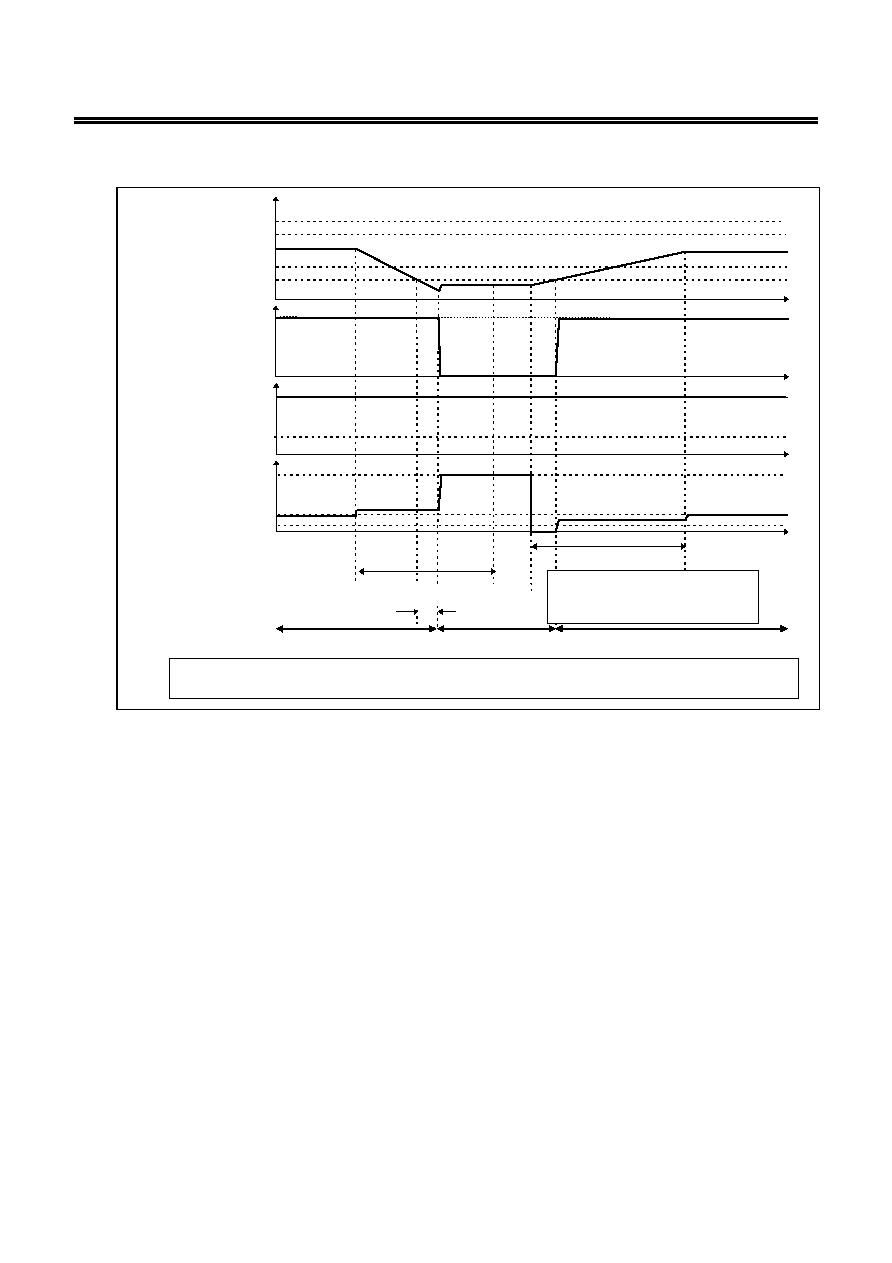
BATTERY PROTECTION IC FOR SINGLE-CELL PACK
Rev.2.0_00
S-8201 Series
Seiko Instruments Inc.
23
3. Charger Detection
V
CU
V
CL
(V
CU
-
-
-
-V
HC
)
V
DU
(V
DL
+
+
+
+V
HD
)
V
DL
V
DD
V
SS
V
DD
V
SS
V
DD
V
SS
V
CHA
Overdischarge detection delay time (t
DL
)
In case VM pin voltage
< V
CHA
Overdischarge is released at the
overdischarge detection voltage (V
DL
)
(1)
(3)
(1)
Battery
voltage
DO pin
CO pin
VM pin
Charger connection
Load connection
Mode
Note: (1) Normal condition, (2) Overcharge condition, (3) Overdischarge condition, (4) Overcurrent condition
The charger is supposed to charge with constant current.
Figure 12
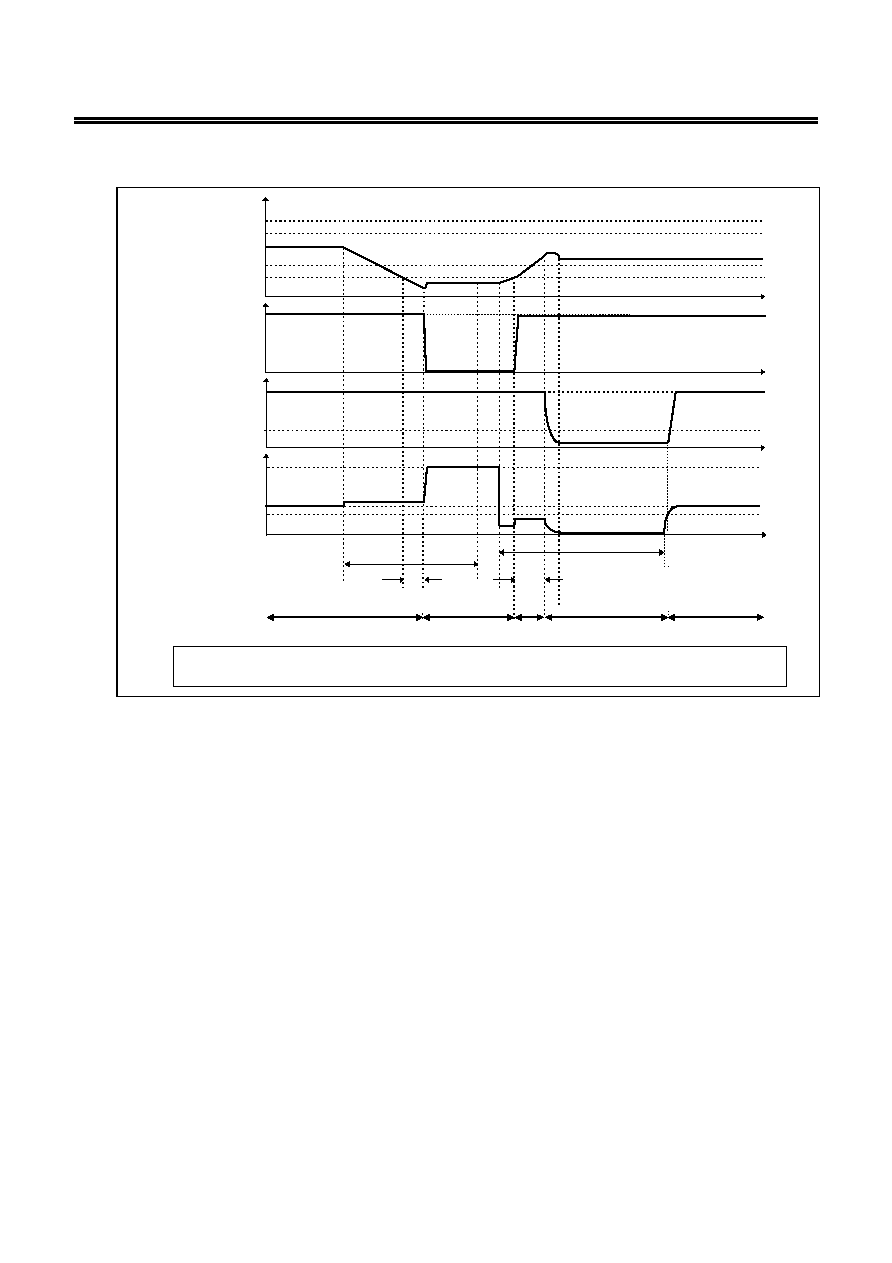
BATTERY PROTECTION IC FOR SINGLE PACK
S-8201 Series
Rev.2.0
_00
24
Seiko Instruments Inc.
4. Abnormal Charge Current Detection
Abnormal charging current detection delay time
(
= Overcharge detection delay time (t
CU
))
Overdischarge detection delay time (t
DL
)
(3)
(1)
(2)
(1)
(1)
Battery
voltage
DO pin
CO pin
VM pin
Charger connection
Load connection
Mode
Note: (1) Normal condition, (2) Overcharge condition, (3) Overdischarge condition, (4) Overcurrent condition
The charger is supposed to charge with constant current.
V
CU
V
CL
(V
CU
-
-
-
-V
HC
)
V
DU
(V
DL
+V
HD
)
V
DL
V
DD
V
SS
V
DD
V
SS
V
DD
V
SS
V
CHA
Figure 13

BATTERY PROTECTION IC FOR SINGLE-CELL PACK
Rev.2.0_00
S-8201 Series
Seiko Instruments Inc.
25
Example for Battery Protection IC Connection
Battery
R1
470
C1
0.1
µF
VDD
VSS
S-8201Series
VM
CO
DO
DP
R2
2 k
FET2
FET1
EB
-
EB
+
Figure 14
Table 13 Constant for External Components
Symbol Parts
Purpose
Recommend Min. Max.
Remarks
FET1
Nch
MOS FET
Charge control
Threshold voltage
overdischarge detection
voltage
*1
,
Gate to source withstand voltage
Charger
voltage
FET2
Nch
MOS FET
Discharge control
Threshold voltage
overdischarge detection
voltage
*1
,
Gate to source withstand voltage
Charger
voltage
R1
Resistor
ESD protection,
For power fluctuation
470
300
1
k
Resistance should be as small as possible to
avoid lowering of the overcharge detection
accuracy caused by VDD pin current.
*2
C1
Capacitor For power fluctuation
0.1
µF 0.022
µF 1.0 µF
Install a capacitor of 0.022
µF or higher
between VDD pin and VSS pin.
*3
R2
Resistor
Protection for reverse
connection of a
charger
2 k
300
4
k
Select a resistance as large as possible to
prevent current when a charger is reversely
connected.
*4
*1. If the threshold voltage of an EFT is low, the FET may not cut the charging current.
If an FET with a threshold voltage equal to or higher than the overdischarge detection voltage is used,
discharging may be stopped before overdischarge is detected.
If the withstand voltage between the gate and source is lower than the charger voltage, the FET may
destroy.
*2. If R1 has a high resistance, the voltage between VDD pin and VSS pin may exceed the absolute maximum
rating when a charger is connected reversely since the current flows from the charger to the IC. Insert a
resistor of 300
or higher as R1 for ESD protection.
*3. If a capacitor of less than 0.022
µF is installed as C1, DO may oscillate when load short-circuiting is
detected. Be sure to install a capacitor of 0.022
µF or higher as C1.
*4. If R2 has a resistance higher than 4 k
, the charging current may not be cut when a high-voltage charger is
connected.
Caution 1. The DP pin should be open.
2. The above connection diagram and constants will not guarantees successful operation.
Perform through evaluation using the actual application to set the constant.

BATTERY PROTECTION IC FOR SINGLE PACK
S-8201 Series
Rev.2.0
_00
26
Seiko Instruments Inc.
Precautions
∑ The application condition for input voltage, output voltage and load current should not exceed the package
power dissipation.
∑ Do not apply an electrostatic discharge to this IC that exceeds the performance ratings of the built-in
electrostatic protection circuit.
∑ SII claims no responsibility for any and all disputes arising out of or in connection with any infringement of
the products including this IC upon patents owned by a third party.
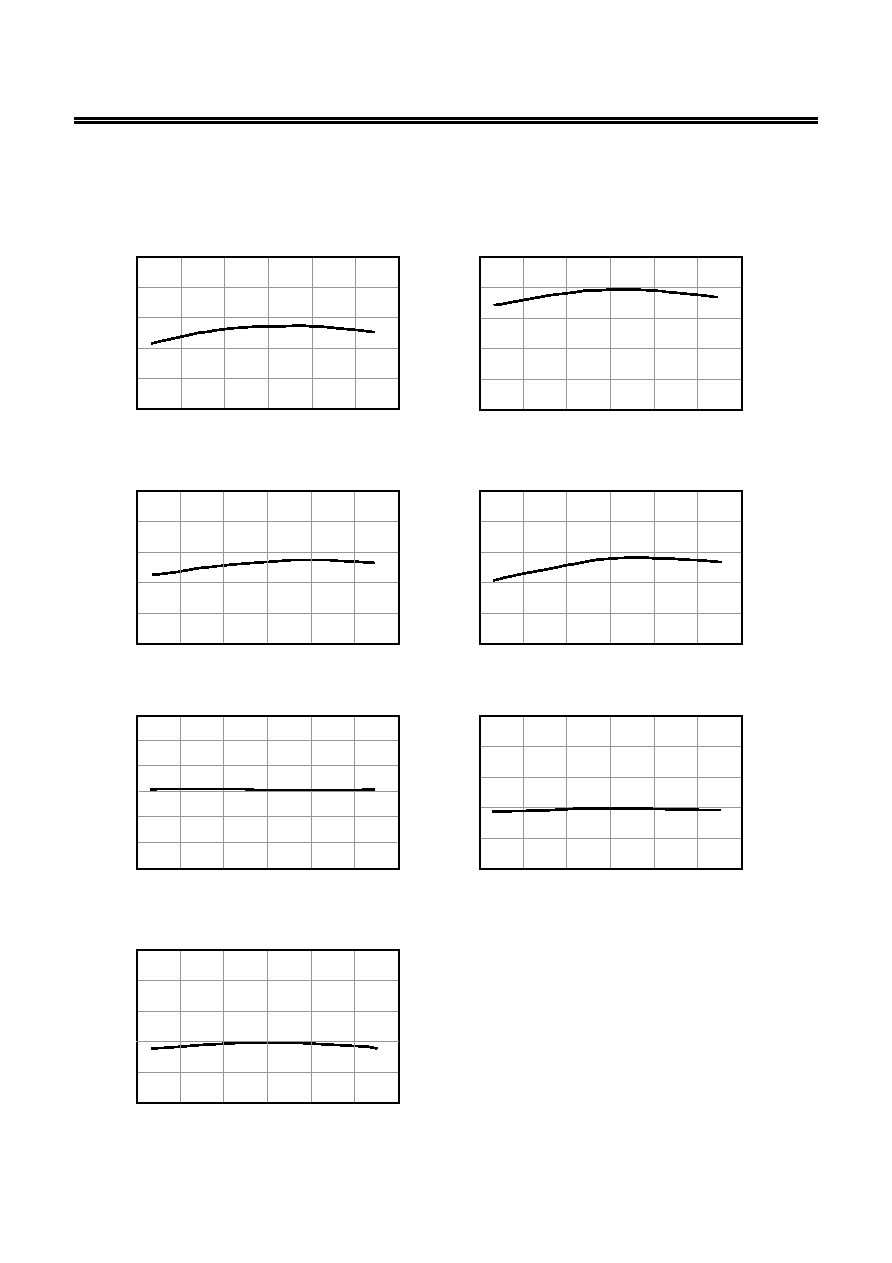
BATTERY PROTECTION IC FOR SINGLE-CELL PACK
Rev.2.0_00
S-8201 Series
Seiko Instruments Inc.
27
Typical Characteristics (Typical Data)
1. Detection/Release Voltage Temperature Characteristics
4.34
4.36
4.38
4.40
4.42
4.44
-25
0
25
50
75
Ta(∞C)
V
CU
(V
)
Overcharge detection voltage vs.temperature
-50
100
3.92
3.94
3.96
3.98
4.00
4.02
-25
0
25
50
75
Ta(∞C)
V
CL
(V
)
Overcharge release voltage vs. temperature
-50
100
2.94
2.96
2.98
3.00
3.02
3.04
-25
0
25
50
75
Ta(∞C)
V
DL
(V
)
Overdischarge detection voltage vs. temperature
-50
100
3.34
3.36
3.38
3.40
3.42
3.44
-25
0
25
50
75
Ta(∞C)
V
DU
(V
)
Overdischarge release voltage vs.temperature
-50
100
0.15
0.20
0.25
0.30
0.35
0.40
0.45
-25
0
25
50
75
Ta(∞C)
V
IOV1
(V
)
Overcurrent1 detection voltage vs.temperature
-50
100
0.40
0.45
0.50
0.55
0.60
0.65
-25
0
25
50
75
Ta(∞C)
V
IOV2
(V
)
Overcurrent 2 detection voltage vs.temperature
-50
100
1.0
1.1
1.2
1.3
1.4
1.5
-25
0
25
50
75
Ta(∞C)
V
SHOR
T
(V
)
Load short-circuiting detection voltage vs. temperature
-50
100

BATTERY PROTECTION IC FOR SINGLE PACK
S-8201 Series
Rev.2.0
_00
28
Seiko Instruments Inc.
2. Current Consumption Temperature Characteristics
0
1
2
3
4
5
Current consumption vs.temperature in normal mode
-25
0
25
50
75
Ta(∞C)
I
OPE
(
µ
A)
-50
100
0.00
0.02
0.04
0.06
0.08
0.10
Current consumption vs.temperature in power-down mode
-25
0
25
50
75
Ta(∞C)
I
PDN
(
µ
A)
-50
100
3. Current Consumption Power Voltage Characteristics (Ta
=
=
=
=25∞C)
0
1
2
3
4
5
6
0
2
4
6
8
10
12
V
DD
(V)
Current consumption power supply voltage
dependency
I
OPE
(
µ
A)
4. Detection/Release Delay Time Temperature Characteristics
0.50
0.75
1.00
1.25
1.50
-25
0
25
50
75
Ta(∞C)
t
CU
(s)
Overcharge detection delay time vs. temperature
-50
100
10
20
30
40
50
60
-25
0
25
50
75
Ta(∞C)
t
CL
(m
s)
Overcharge release delay time vs. temperature
-50
100
100
120
140
160
180
200
-25
0
25
50
75
Ta(∞C)
t
DL
(m
s)
Overdischarge detection delay time vs. temperature
-50
100
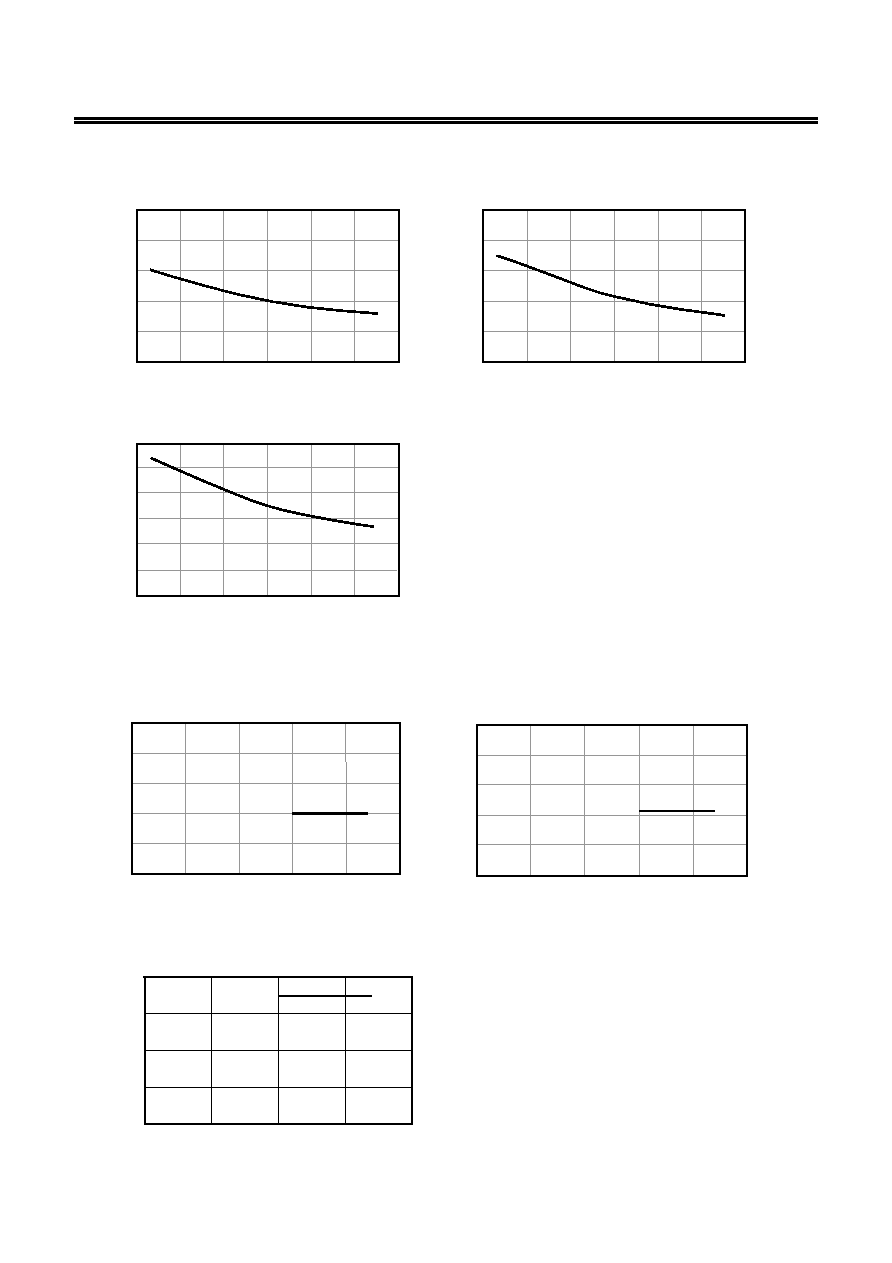
BATTERY PROTECTION IC FOR SINGLE-CELL PACK
Rev.2.0_00
S-8201 Series
Seiko Instruments Inc.
29
5
7
9
11
13
15
-25
0
25
50
75
Ta(∞C)
t
IOV1
(m
s)
Overcurrent 1 detection delay time vs. temperature
-50
100
1.4
1.8
2.2
2.6
3.0
3.4
-25
0
25
50
75
Ta(∞C)
t
IOV2
(m
s)
Overcurrent 2 detection delay time vs. temperature
-50
100
0.16
0.20
0.24
0.28
0.32
0.36
0.40
-25
0
25
50
75
Ta(∞C)
t
SHOR
T
(m
s)
Load short-circuiting delay time vs. temperature
-50
100
5. Delay Time Power-voltage Characteristics (Ta
=
=
=
=25∞C)
5
7
9
11
13
15
2
2.5
3
3.5
4
4.5
Overcurrent 1 detection delay time vs.
power supply voltage
dependency
t
IOV1
(m
s)
V
DD
(V)
1.4
1.8
2.2
2.6
3.0
3.4
2
2.5
3
3.5
4
4.5
V
DD
(V)
Overcurrent 2 detection delay time vs.
power supply voltage
dependency
t
IOV2
(m
s)
0.16
0.2
0.24
0.28
0.32
2.5
3
3.5
4
4.5
V
DD
(V)
t
SHORT
(ms)
Load short-circuiting delay time vs. power
supply voltage dependency
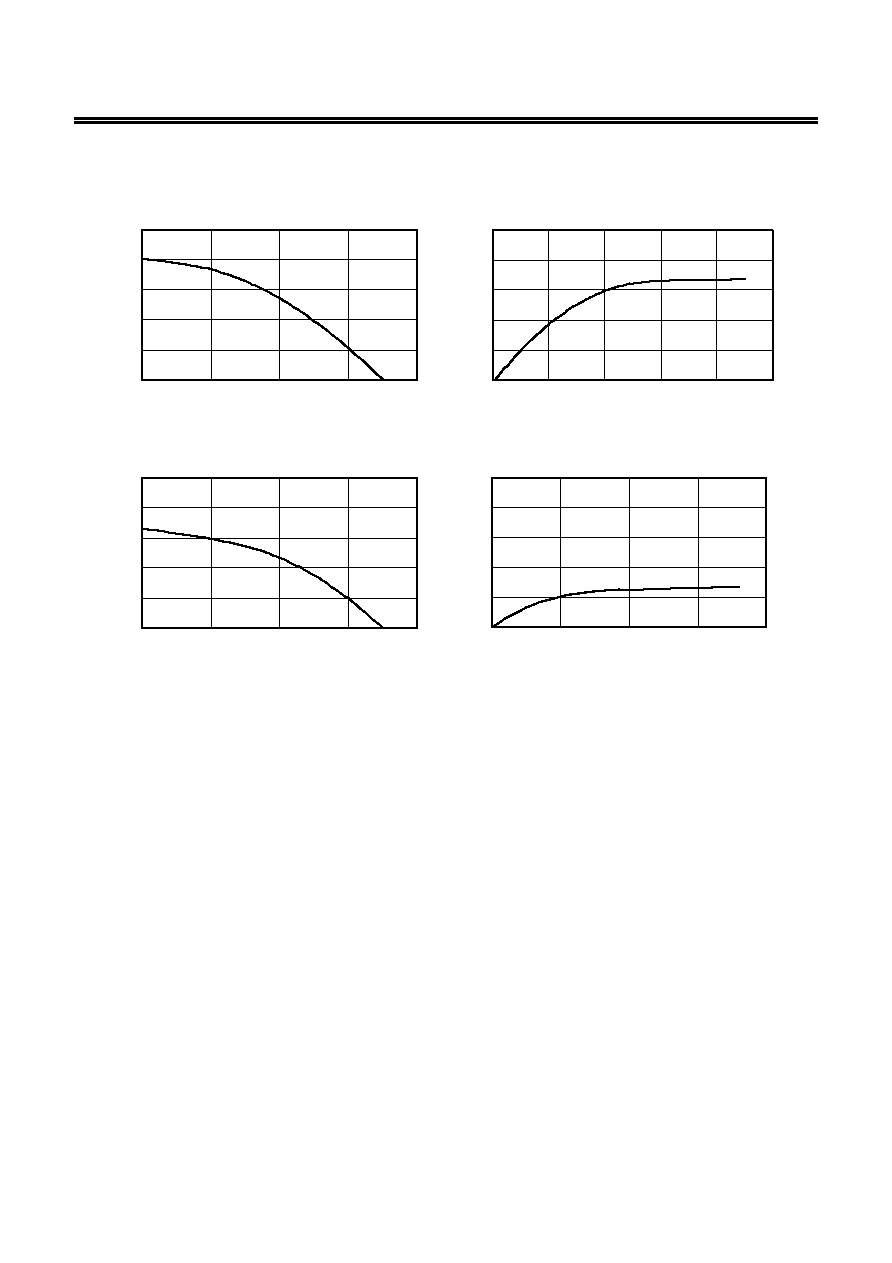
BATTERY PROTECTION IC FOR SINGLE PACK
S-8201 Series
Rev.2.0
_00
30
Seiko Instruments Inc.
6. CO Pin/DO Pin Output Current Characteristics (Ta
=
=
=
=25∞C)
-0.5
-0.4
-0.3
-0.2
-0.1
0
0
1
2
3
4
V
CO
(V)
I
CO
(mA)
CO pin source current characteristics
V
DD
=3.5V,V
M
=V
SS
=0V
0
0.1
0.2
0.3
0.4
0.5
0
1
2
3
4
5
V
CO
(V)
I
CO
(mA)
CO pin sink current characteristics
V
DD
=4.5V,V
M
=V
SS
=0V
-0.5
-0.4
-0.3
-0.2
-0.1
0
0
1
2
3
4
V
DO
(V)
I
DO
(mA)
DO pin source current characteristics
V
DD
=3.5V,V
M
=V
SS
=0V
0
0.1
0.2
0.3
0.4
0.5
0
0.5
1
1.5
2
V
DO
(V)
I
DO
(mA)
DO pin sink current characteristics
V
DD
=1.8V,V
M
=V
SS
=0V
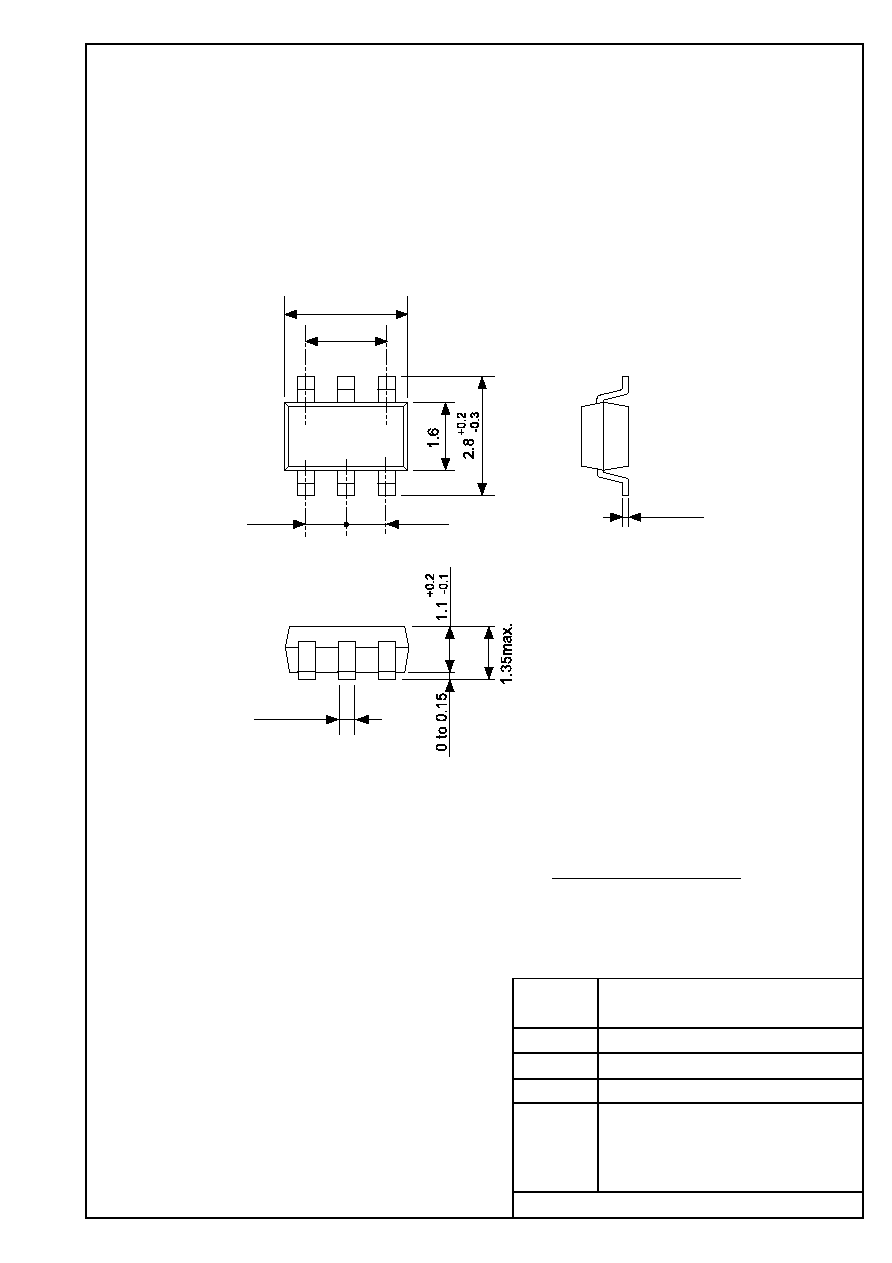
2.9±0.2
0.15
1.9±0.2
1
2
3
4
6
5
0.35±0.15
0.95
+0.1
-0.05
0.95
No.
TITLE
SCALE
UNIT
mm
Seiko Instruments Inc.
No. MP006-A-P-SD-1.1
MP006-A-P-SD-1.1
SOT236-A-PKG Dimensions

No.
TITLE
SCALE
UNIT
mm
TF(T2) type
1
2
3
4 5 6
¯1.5
+0.1
-0
2.0±0.05
¯1.0
+0.2
-0
4.0±0.1
1.4±0.2
0.25±0.1
3.2±0.2
Seiko Instruments Inc.
No. MP006-A-C-SD-3.1
MP006-A-C-SD-3.1
SOT236-A-Carrier Tape
Feed direction
4.0±0.1(10 pitches:40.0±0.2)

No.
TITLE
SCALE
UNIT
mm
12.5max.
9.0±0.3
¯13±0.2
(60∞)
(60∞)
QTY
3,000
Seiko Instruments Inc.
Enlarged drawing in the central part
No. MP006-A-R-SD-2.1
MP006-A-R-SD-2.1
SOT236-A-Reel
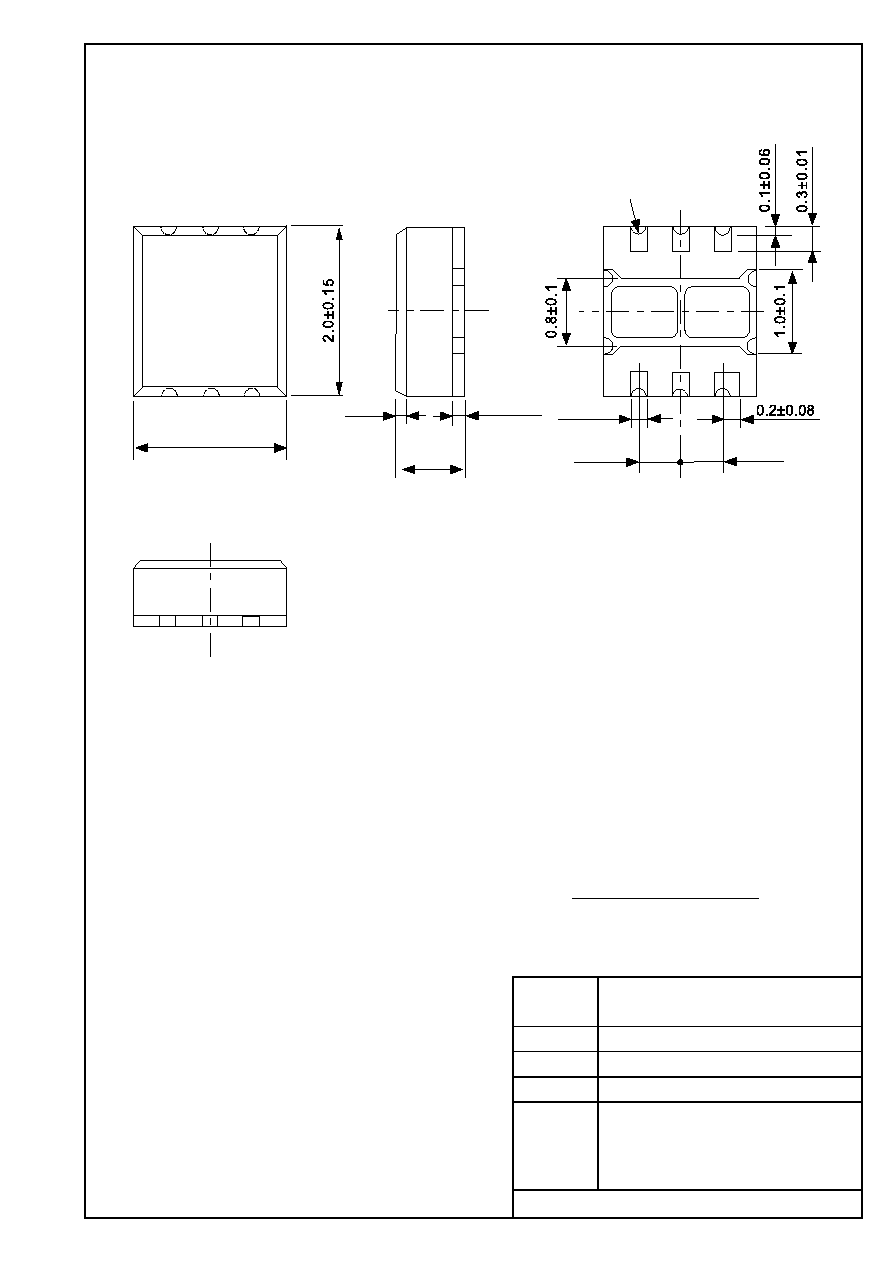
1.8±0.15
0.5±0.1
0.5±0.1
0.8±0.05
0.14±0.05
R(0.075)
0.2±0.08
(0.125)
1
2
3
4
5
6
SNB6B-A-PKG Dimensions
No. BD006-A-P-SD-1.1
Seiko Instruments Inc.
No.
TITLE
SCALE
UNIT
mm
BD006-A-P-SD-1.1

No.
TITLE
SCALE
UNIT
mm
4.0±0.1
2.0±0.05
4.0±0.1
¯1.5±0.1
2.2±0.1
1.1±0.1
0.25±0.05
¯1.1±0.1
Seiko Instruments Inc.
Feed direction
SNB6B-A-Carrier Tape
No. BD006-A-C-SD-2.1
BD006-A-C-SD-2.1
1
2
3
6
5
4
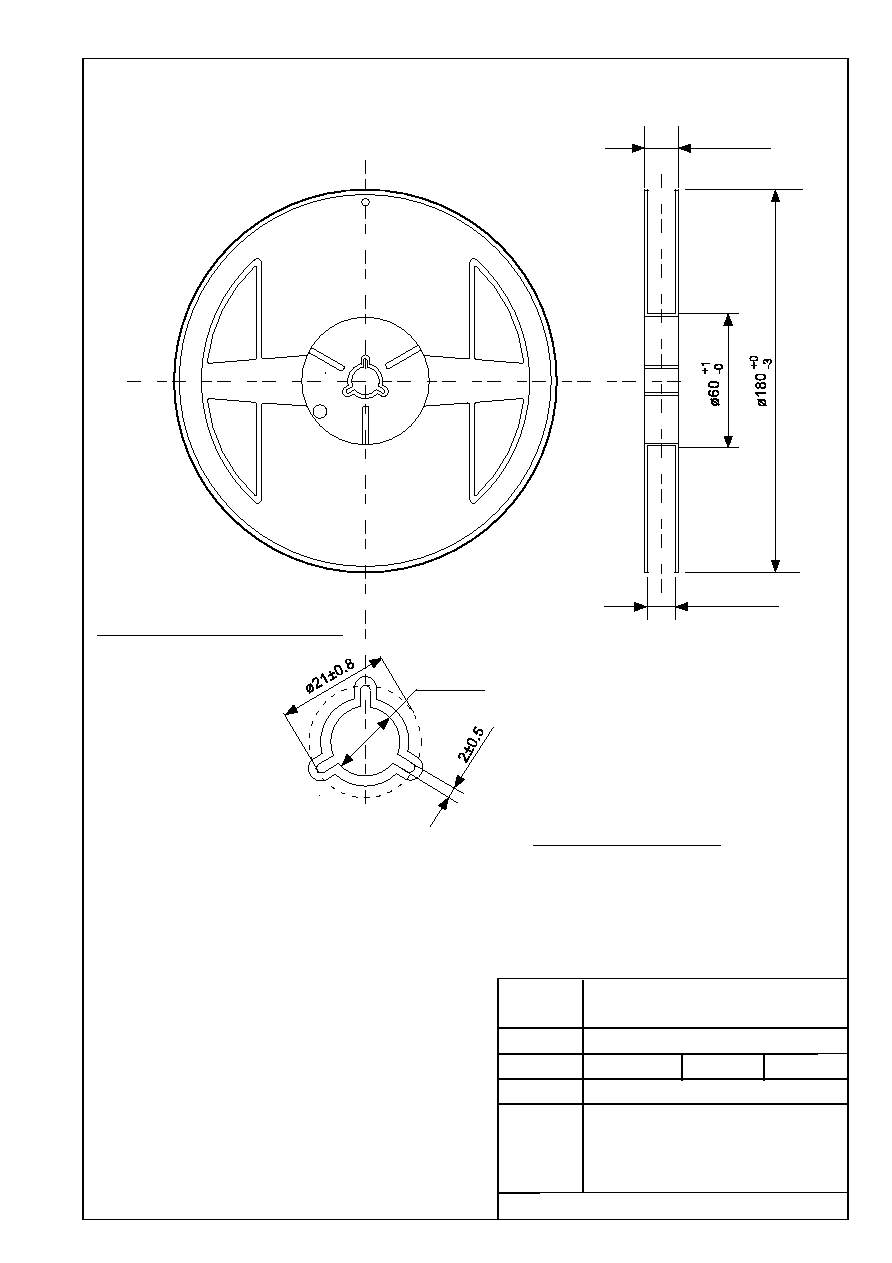
QTY.
3,000
No.
TITLE
SCALE
UNIT
mm
12.5max.
9.0±0.3
¯13±0.2
Seiko Instruments Inc.
Enlarged drawing in the central part
SNB6B-A-Reel
No. BD006-A-R-SD-1.1
BD006-A-R-SD-1.1

∑
The information described herein is subject to change without notice.
∑
Seiko Instruments Inc. is not responsible for any problems caused by circuits or diagrams described herein
whose related industrial properties, patents, or other rights belong to third parties. The application circuit
examples explain typical applications of the products, and do not guarantee the success of any specific
mass-production design.
∑
When the products described herein are regulated products subject to the Wassenaar Arrangement or other
agreements, they may not be exported without authorization from the appropriate governmental authority.
∑
Use of the information described herein for other purposes and/or reproduction or copying without the
express permission of Seiko Instruments Inc. is strictly prohibited.
∑
The products described herein cannot be used as part of any device or equipment affecting the human
body, such as exercise equipment, medical equipment, security systems, gas equipment, or any apparatus
installed in airplanes and other vehicles, without prior written permission of Seiko Instruments Inc.
∑
Although Seiko Instruments Inc. exerts the greatest possible effort to ensure high quality and reliability, the
failure or malfunction of semiconductor products may occur. The user of these products should therefore
give thorough consideration to safety design, including redundancy, fire-prevention measures, and
malfunction prevention, to prevent any accidents, fires, or community damage that may ensue.




































